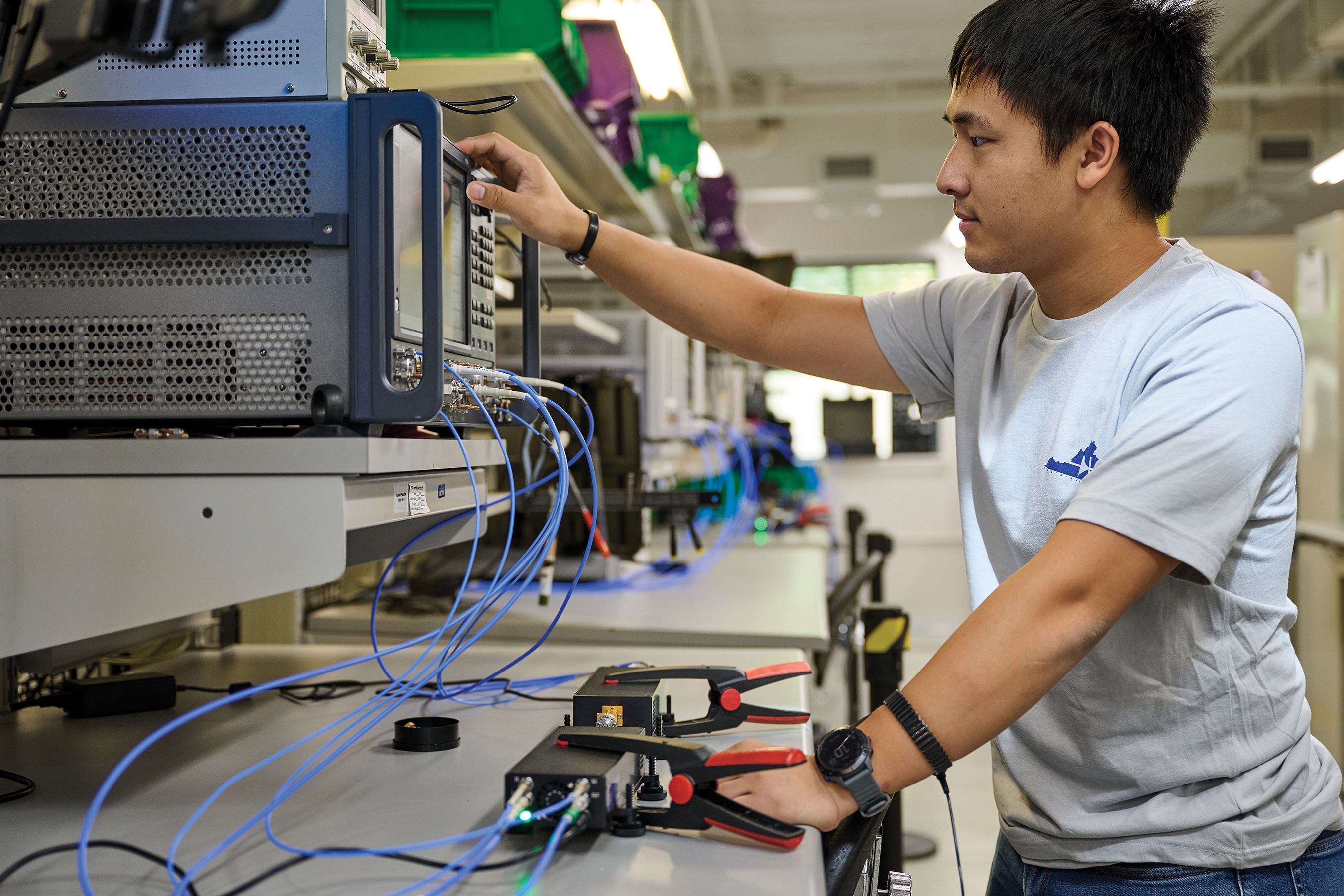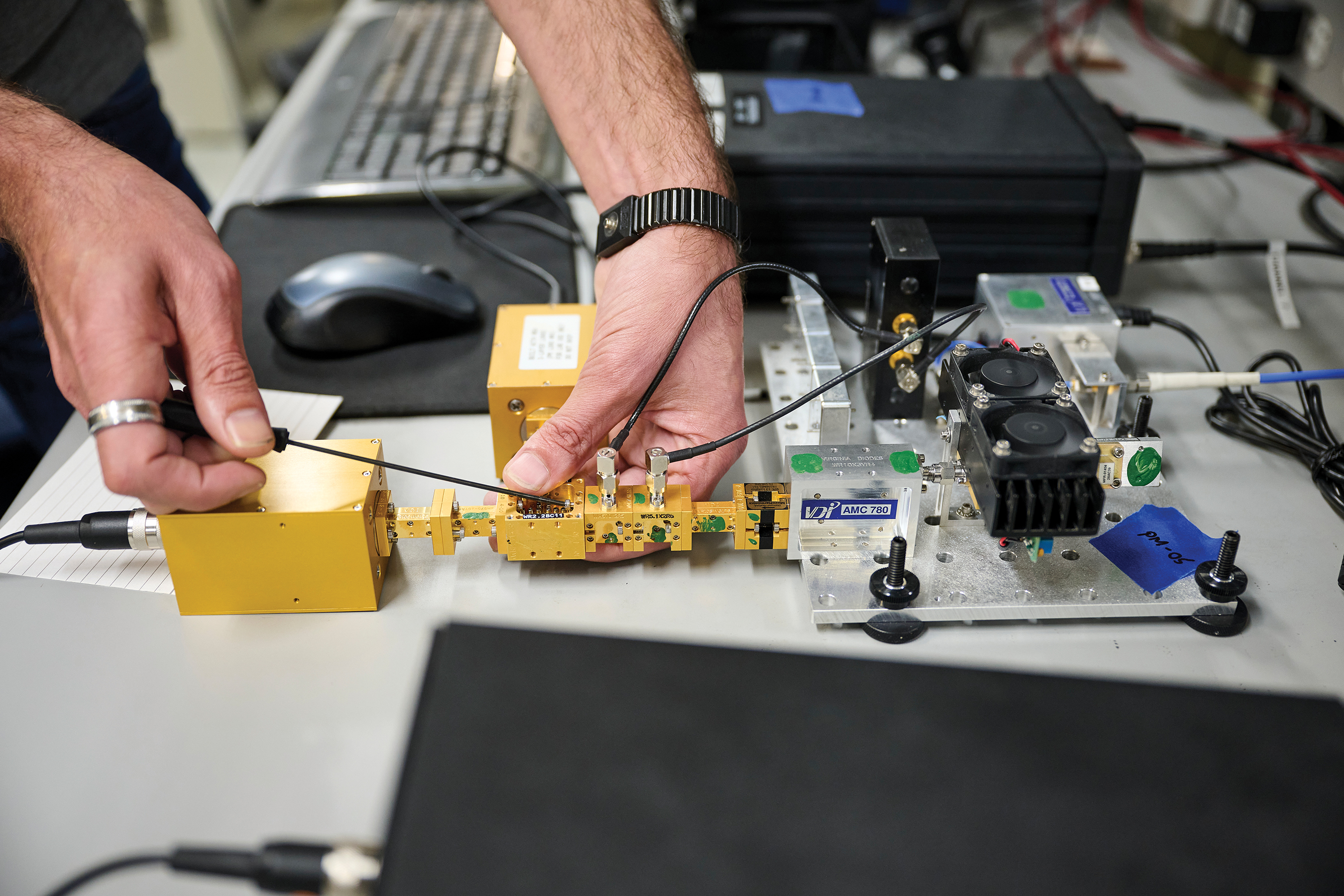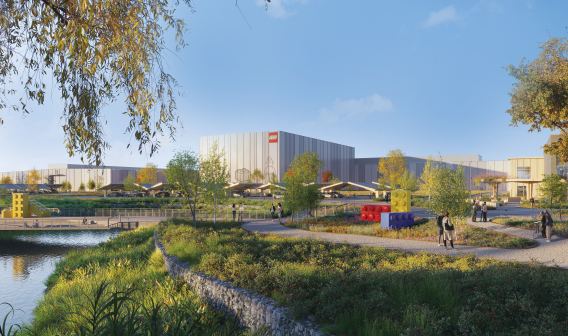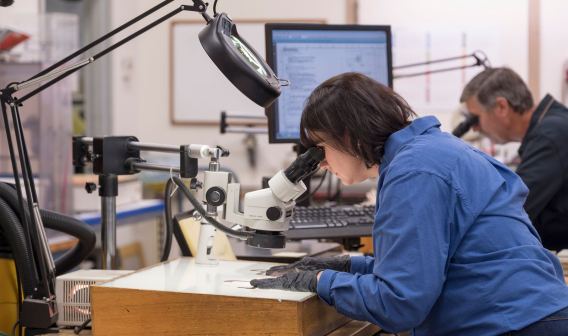Virginia Diodes Works to Fill the Terahertz Gap
Modern life is shaped by electronic devices that employ many frequencies of electromagnetic radiation, from radio and television broadcasts, to cell phone, Bluetooth, and Wi-Fi signals, to visible light displays and high-frequency medical imaging. Somewhere between microwave ovens and infrared night vision, there’s a once-neglected space overlooked by engineers called the Terahertz Gap.
Virginia Diodes, Inc. (VDI) is a world-leading vertically integrated manufacturer of electronics within that technological niche: terahertz (THz) and millimeter wave (mmWave) ranges. The Charlottesville company focuses on frequencies roughly between 50 GHz and 2 THz (wavelengths of 6 millimeters and 150 micrometers), and now many established and experimental applications are within that continuum. It is much wider than, for example, the FM radio bands. The company catalog lists thousands of items, and they can meet sophisticated custom specifications. The business is “high mix, low volume.”
VDI products aren’t generally the sort of things you’d find in commercially available devices. Rather, as interest in terahertz and millimeter wave frequencies has grown over the company’s lifespan, VDI products are increasingly enabling cutting-edge science in spectroscopy, fusion plasma science, quantum computing, and other fields while helping engineers prototype some of the most buzzed-about emerging technologies, including 6G communications and automotive radar.
Virginia Diodes Chief Operating Officer Gerhard Schoenthal said, “The carpenter needs a ruler,” and the electrical engineer working with particular bands of electromagnetic radiation needs something similar. “We produce those systems for them.”
History in the Making
In 2004, VDI moved their main operations into a 10,000-sq.-ft. custom space in the newly converted Ix Business Park, on the site of a former textile mill. At its 20th-century peak, Ix Textiles, which supplied unfinished fabrics to the military, was one of the largest regional employers. While new loom technologies had helped push Ix to Virginia in search of unskilled labor, VDI now employs more than 100 trained engineers, skilled technicians, and support employees across two Charlottesville locations. High-tech hardware manufacturing might seem in stark contrast with the historical setting, but there are good reasons for this particular center of technology in Charlottesville.
In 1958, the National Radio Astronomy Observatory (NRAO) set up shop in Green Bank, W.Va. This was accompanied by establishment of the National Radio Quiet Zone, a 13,000-square-mile region straddling the border between Virginia and West Virginia, in which the Federal Communications Commission restricts radio transmissions that might interfere with radio telescope observations. It was a first for the United States, but also intended as a center of international science.
Over the next decade, NRAO began monitoring millimeter wave radiation and created a new headquarters at the Quiet Zone’s eastern boundary, on the campus of the University of Virginia (UVA) in Charlottesville. Thomas Crowe, CEO of Virginia Diodes, attended graduate school at UVA before becoming a research professor in electrical engineering at the university. He founded VDI in 1996 as a part-time producer of electronic components called Schottky diodes, purpose-built for the international radio astronomy community.
Customers were happy with the quality of the diodes and components, but many wanted full systems, which encouraged the business to expand into new manufacturing in their renovated space.
A Range of Uses
VDI still produces radio astronomy equipment, and even sells some of its namesake diodes. But the repertoire has expanded along with global interest in other uses for millimeter and terahertz waves. “VDI is a much different business than 27 years ago,” said Schoenthal.
The company’s mission statement reflects the ambition and breadth of those emerging technologies: “To make the terahertz region of the electromagnetic spectrum as useful for scientific, military, and commercial applications as the microwave and infrared bands are today.”
Radio telescopes sensitive to millimeter waves have helped to provide a more complete picture of the universe, able to detect particular chemicals’ presence in distant gaseous clouds. VDI collaborated on the Atacama Large Millimeter/submillimeter Array in Chile, the largest telescope on the planet. Closer to home, millimeter wave equipment is useful in test and measurement equipment and is also deployed in smaller, more economical satellites called cubesats to monitor and predict weather patterns and climate trends. VDI has worked with NASA on a project called IceCube, which launched a cubesat from the International Space Station to monitor ice in high-altitude clouds on Earth.
In the last decade or so, the customer base has grown from mostly university and national laboratory researchers to include commercial interests at major electronics companies. Possible commercial applications include radar systems for autonomous vehicles or mobile phones and next-generation communications. Continued expansion of 5G services now includes frequencies in millimeter wave territory. VDI test equipment is being used for regulatory testing of current smartphones that include 5G millimeter wave radio. As engineers look ahead to 6G, communications frequencies will likely take advantage of even more unused bandwidth in that range.
From Virginia to the World
Roots in radio astronomy established an international scientific customer base. Today, exports to over 40 countries are more than half of VDI sales. While trade shows have been important to the company for most of its history, VDI has recently taken advantage of VEDP’s International Trade Services, which offers Virginia companies up to $10,000 reimbursement toward international trade show expenses. With VEDP support, VDI exhibited at European Microwave Week in 2020 and 2022 and the International Microwave Symposium in 2021.
After pandemic disruptions, “VEDP’s contribution helped us get back into action with these large trade shows that are critical to VDI’s success,” said Schoenthal. International trade shows are among the larger events on their schedule, and months of planning go into each convention. With so many existing accounts abroad, these showcases aren’t just good marketing, but important opportunities to strengthen existing relationships with overseas customers and partners across sectors and demonstrate new devices and features face to face.
Continued VEDP support will help VDI grow its trade show presence with larger booths or delegations and improved informational materials. And as millimeter wave and terahertz frequency technologies emerge — as the Terahertz Gap fills in — expect a larger presence at other conferences, trade shows, and expositions of technologies whose engineers rely on VDI equipment.













